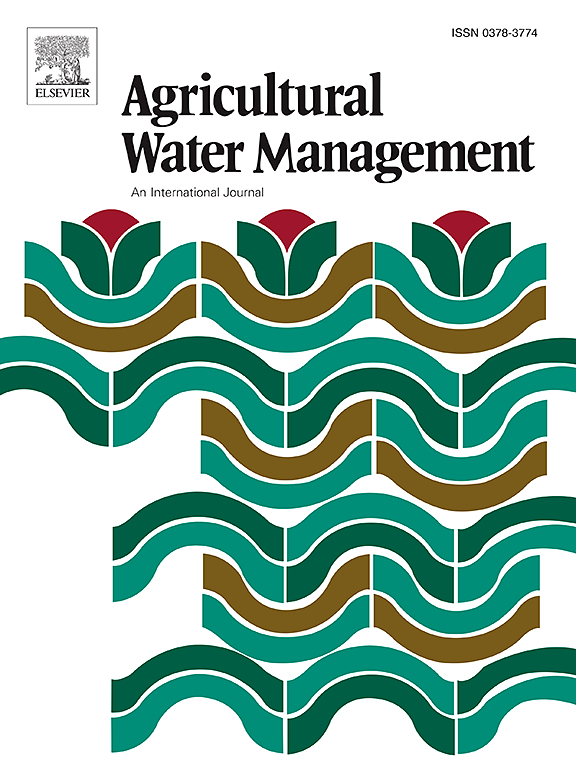基于水分平衡和遥感的杏树果园灌溉调度研究
IF 6.5
1区 农林科学
Q1 AGRONOMY
引用次数: 0
摘要
精确的灌溉计划对有效利用水资源至关重要,特别是在灌溉供应有限的高价值乔木作物中。本研究评估了先前在试验田研究的杏仁果园灌溉调度方法,并将其应用于商业杏仁农场(cv。Lauranne),并采用新技术进行树冠表征和水分胁迫评估。研究了四种灌溉处理:根据激光雷达作物系数估算作物蒸散发量的对照(F)、灌水量增加22% %和44% %的两个过度灌溉处理(SR1、SR2)和比F减少30% %的亏缺(D)。尽管在过度灌溉处理中增加了22 %和44 %的水量,但与对照处理(2800 kg/ha)相比,未观察到产量的显著增加,这表明F代表了最佳灌溉水平。相比之下,亏缺处理的4年累积产量下降了20% %,突出了低于F的供水量减少对累积产量的影响。先进的技术,如捕捉冠层信息的激光雷达和监测作物水分状况的远程热成像技术,对于微调和改进灌溉计划决策至关重要。这项研究强调需要在已建立的商业果园进行长期研究,以提高农业实践的可持续性和效率。本文章由计算机程序翻译,如有差异,请以英文原文为准。
Irrigation scheduling of an almond orchard using the water balance and remote and proximal sensing
Precise irrigation scheduling is critical to efficient water use, particularly in high-value tree crops with limited irrigation supply. This study evaluates an irrigation scheduling methodology for almond orchards, previously studied in experimental fields, applied to a commercial almond farm (cv. Lauranne) over a four-year period and incorporating new technologies for canopy characterization and water stress assessment. Four irrigation treatments were studied: a control (F) based on the crop evapotranspiration estimated using crop coefficient derived from LiDAR, two over-irrigation treatments (SR1, SR2) with 22 % and 44 % increment of irrigation, and a deficit (D) with 30 % reduction over F. Despite increasing the amount of water by 22 % and 44 % in the over-irrigated treatments, no significant increase in yield was observed compared to the control treatment (2800 kg/ha), suggesting that F represents an optimal irrigation level. By contrast, the deficit treatment showed a cumulative yield reduction of 20 % over the four years, highlighting the impact of the reduction in water supply below that of F on cumulative yield. Advanced technologies such as LiDAR to capture canopy information and remote thermography to monitor the crop’s water status were essential to finetuning and improving irrigation scheduling decisions. This study emphasizes the need for long-term studies in established commercial orchards to enhance the sustainability and efficiency of agricultural practices.
求助全文
通过发布文献求助,成功后即可免费获取论文全文。
去求助
来源期刊

Agricultural Water Management
农林科学-农艺学
CiteScore
12.10
自引率
14.90%
发文量
648
审稿时长
4.9 months
期刊介绍:
Agricultural Water Management publishes papers of international significance relating to the science, economics, and policy of agricultural water management. In all cases, manuscripts must address implications and provide insight regarding agricultural water management.
 求助内容:
求助内容: 应助结果提醒方式:
应助结果提醒方式:


